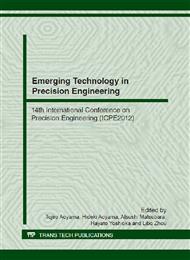p.693
p.699
p.705
p.711
p.717
p.722
p.727
p.733
p.739
Nonlinear Modeling of Human Quiet Standing
Abstract:
Fluctuation during quiet standing of a person is one of the evaluation indexes of aging. Usually, fluctuation is measured by the center of the subject’s weight distribution on the floor, which is called center-of-pressure (COP), or the two dimensional trajectory of the top of the head taken from above the subject. In both cases, common evaluation indexes are standard deviation or maximum deviation. Control models of human quiet standing have been proposed and studied, and now it is widely accepted that human quiet standing is a nonlinear control system. However, there is no established nonlinear control model that expresses the characteristics of human quiet standing accurately. If we could express the nonlinear control dynamics of human quiet standing, the parameters of the control model can be utilized to evaluate subject’s motor control ability in more detail. In this study, we modeled the human body as a two link inverted pendulum. Leaning angle of the lower body and the upper body, and COP were measured in the experiment. Analysis of the data has revealed an asymmetry in the ankle joint torque in the anterior-posterior postural control. This asymmetry was modeled by asymmetric feedback gains of the feedback loop of ankle joint control. The proposed nonlinear model was verified by comparing the simulation results and the experimental data.
Info:
Periodical:
Pages:
717-721
Citation:
Online since:
November 2012
Authors:
Price:
Сopyright:
© 2012 Trans Tech Publications Ltd. All Rights Reserved
Share:
Citation:


